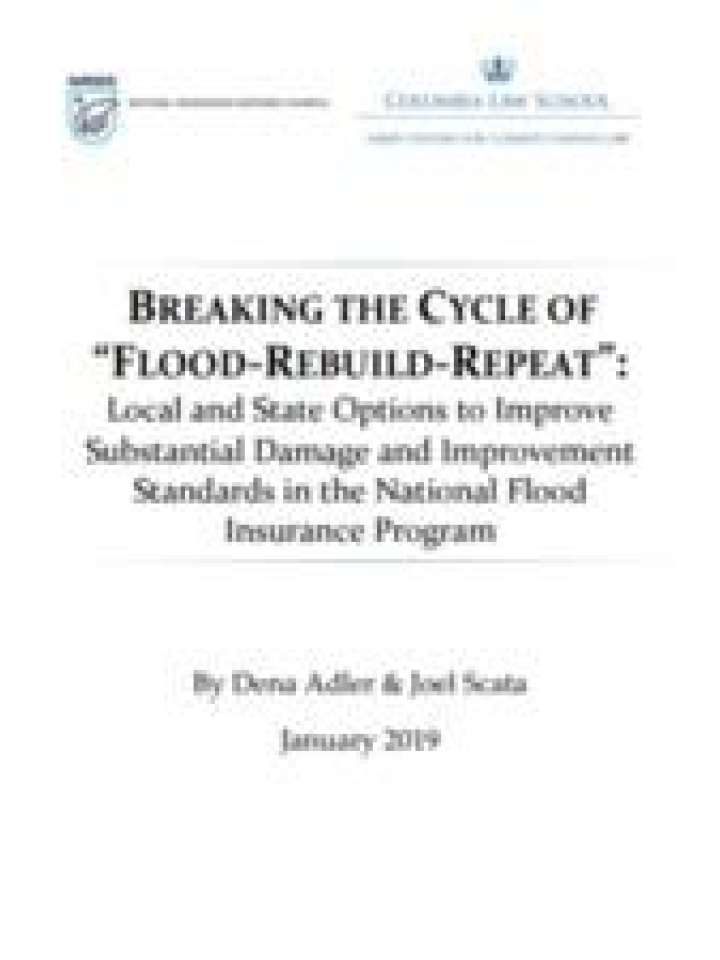Breaking the cycle of "flood-rebuild-repeat": Local and state options to improve substantial damage and improvement standards in the National Flood Insurance Program
This study analyses how to rectify the disproportionate debt impact that Severe Repetitive Loss homes, which only comprise a small proportion of insured properties and repeatedly flood after being rebuilt, have on the U.S. National Flood Insurance Program (NFIP). The authors posit that the NFIP contains an adaptive mechanism — the substantial improvement/damage ("SI/SD") standard — which can break the cycle of "flood-rebuild-repeat." However, the cycle is perpetuated because the standard is only triggered when damages or repair work are equal to or exceed 50 percent of the fair market value of the structure. Moreover, the regulatory definitions of "substantial improvement" and "substantial damage" do not consider repetitive cumulative repair work or cumulative damage over time, allowing the cycle to continue.
The study concludes that reforming the SI/SD standard to calculate damages cumulatively over time and to be triggered for damages and repair work worth less than 50 percent of the property can help the NFIP program better weather a changing climate, lessen the taxpayer burden, and increase the safety of millions of homeowners.
Through model flood ordinances, building codes, other regulations, and guidance, states have several mechanisms to encourage municipalities and counties to adopt these more protective standards. By adopting higher SI/SD standards, communities can reduce their residents’ flood risk, lower residents’ flood insurance premiums, and enable residents to secure federal funds for rebuilding more resiliently after flood damage.
Challenges can be mitigated through:
- Issuing disclosure laws that track expenditures for repairs and damages over time so that new owners are aware of their property’s history
- Novel financing and insurance strategies such as parametric insurance which reduce administrative burden,
- Integrating equity and underlying social vulnerability considerations into a reform package that provides financing and supportive services for low-income and other vulnerable communities.
Explore further
